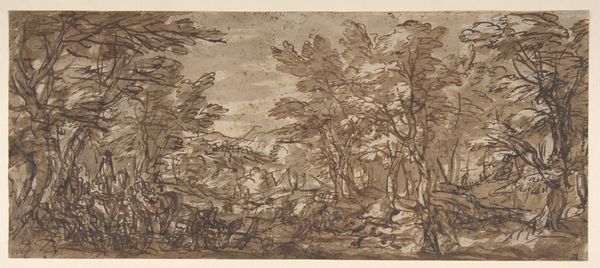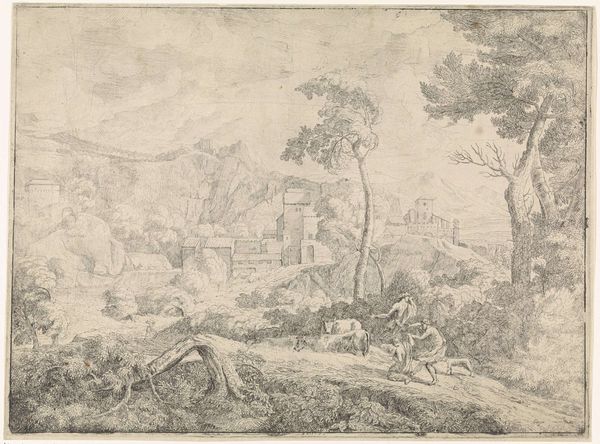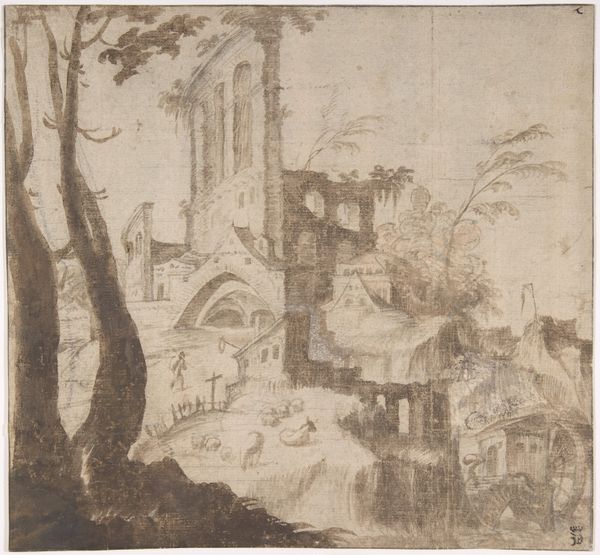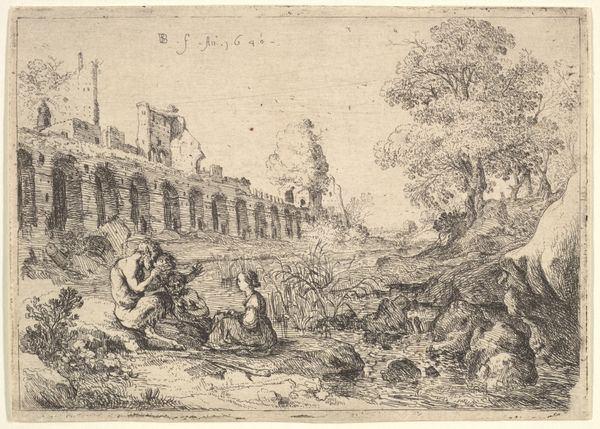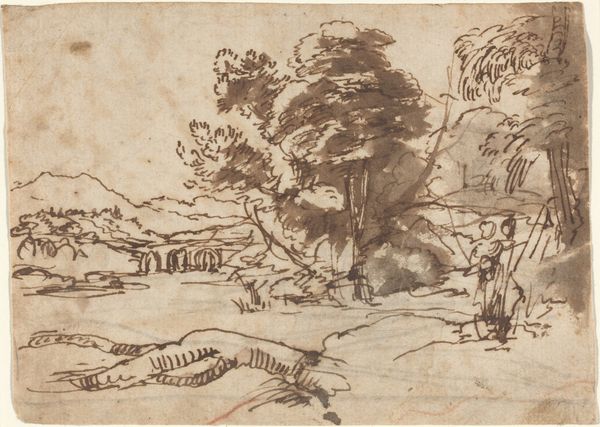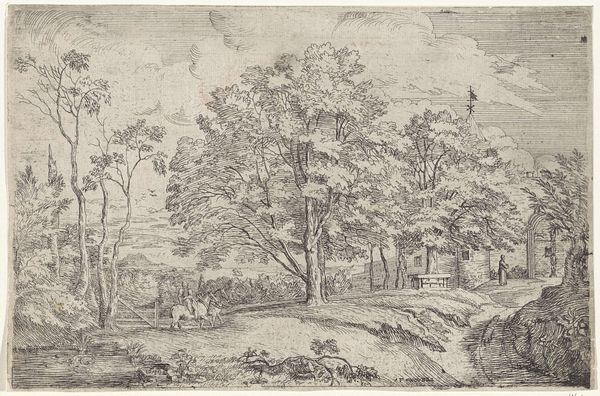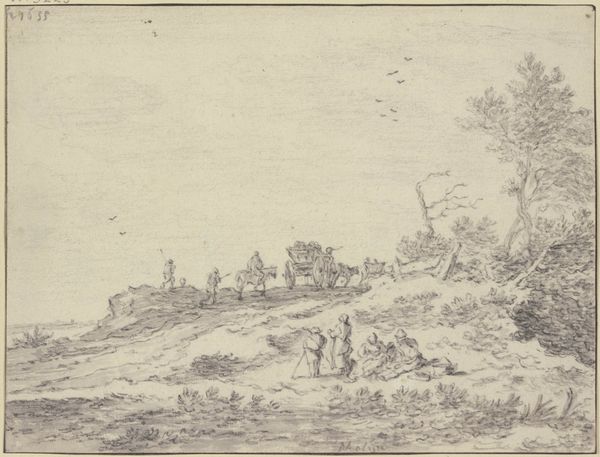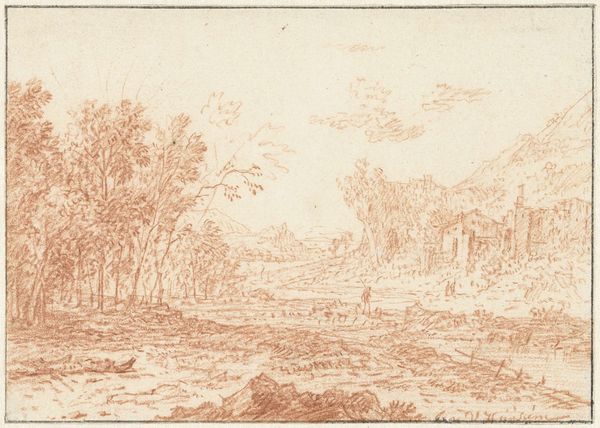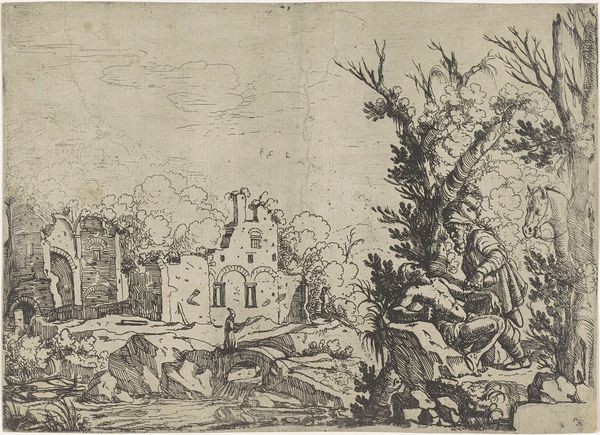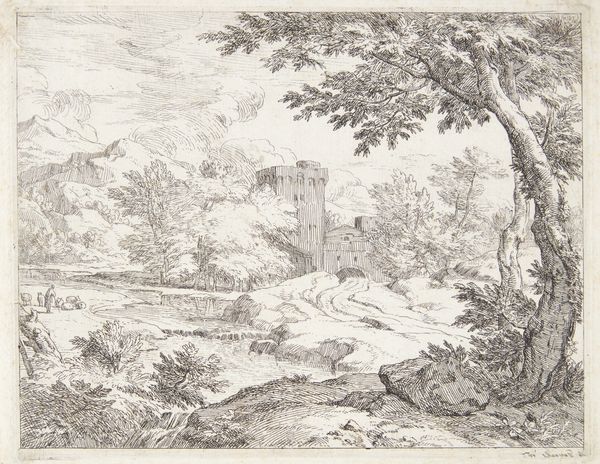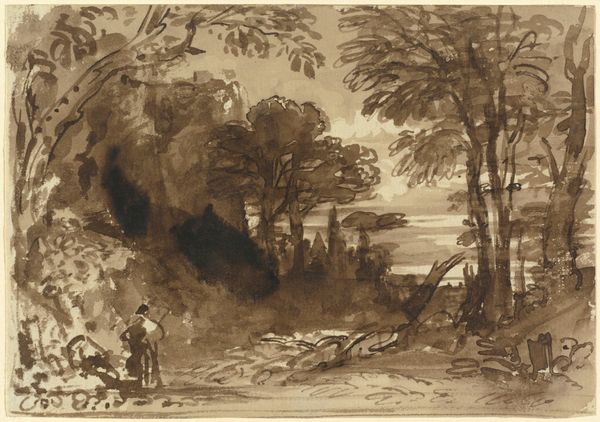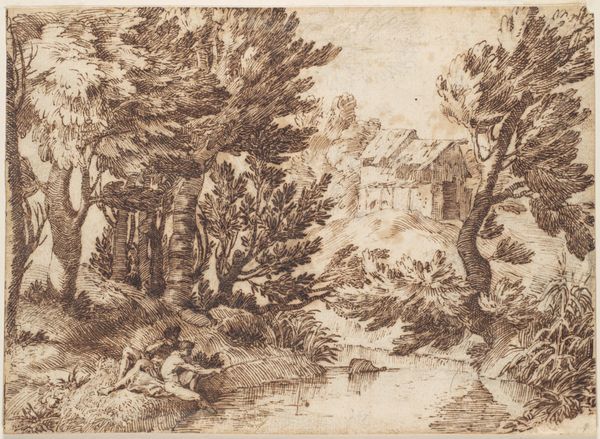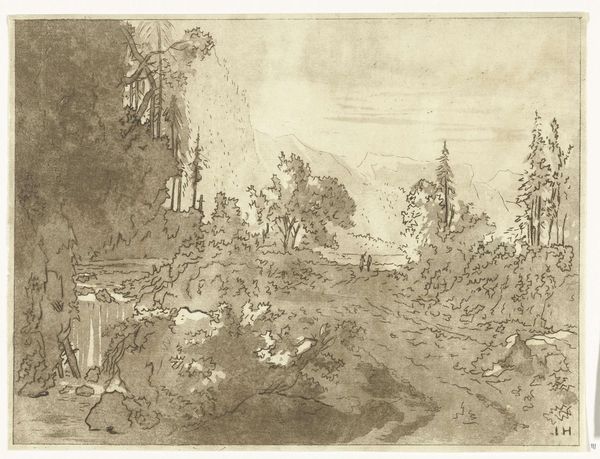
drawing, print, etching, paper, watercolor, ink
#
drawing
#
water colours
# print
#
etching
#
landscape
#
paper
#
romanesque
#
watercolor
#
ink
#
coloured pencil
#
ancient-mediterranean
#
cityscape
#
history-painting
#
academic-art
Dimensions: height 60 mm, width 84 mm
Copyright: Rijks Museum: Open Domain
Editor: This drawing, "Roman Ruins" by Giovanni Battista Piranesi, dates to sometime between 1730 and 1778. It's rendered in ink, watercolor, and colored pencil on paper. The monochromatic brown tones evoke a sense of melancholy and decay. What draws your eye in this particular cityscape? Curator: The ruins, of course, but it's Piranesi’s strategic use of visual symbols, echoing through centuries that I find fascinating. Look how the crumbling architecture, normally associated with power, reveals vulnerability and the relentless march of time. Can you see how the uprooted columns almost feel like fallen heroes, embodying the transience of glory? Editor: I hadn’t thought of the columns as figures. It's as if the drawing isn't just a depiction of a place, but also an allegory about human ambition. Curator: Precisely. Consider too the figures sketched among the ruins—tiny humans dwarfed by the scale of what remains. They represent our contemporary experience of the past, reminding us that we, too, will eventually become part of history's palimpsest. Are they explorers, wanderers, or perhaps even scavengers? Editor: That's a great point. Their presence seems to amplify the feeling of isolation amidst the grandeur of what once was. I’m also struck by how Piranesi romanticizes ruin. Curator: Ah, yes. Through dramatic light and shadow, he creates a visual drama. What feelings does this dramatic staging provoke? Editor: A sense of awe, definitely. But also a feeling of nostalgia for a lost golden age, maybe. I see the past, quite literally, haunting the present. Curator: Indeed. And that enduring echo is the core of Piranesi’s symbolic power. I find my thoughts on cultural memory changed from this artwork. Editor: This perspective really deepens my appreciation of the piece! I feel I will view classical landscapes very differently.
Comments
No comments
Be the first to comment and join the conversation on the ultimate creative platform.
